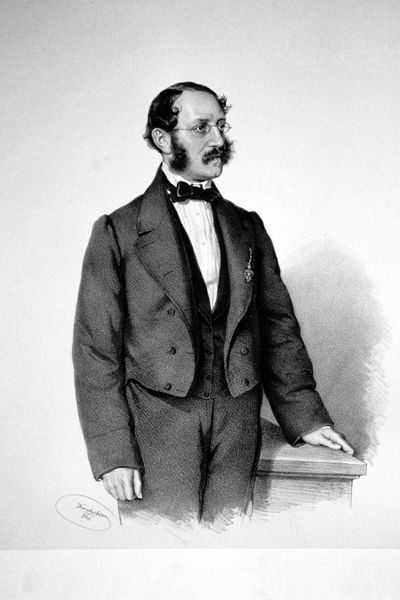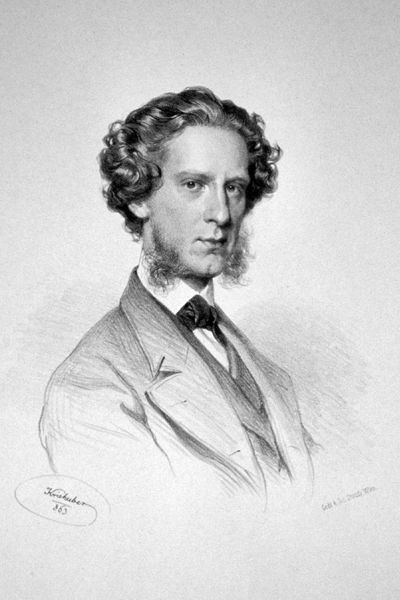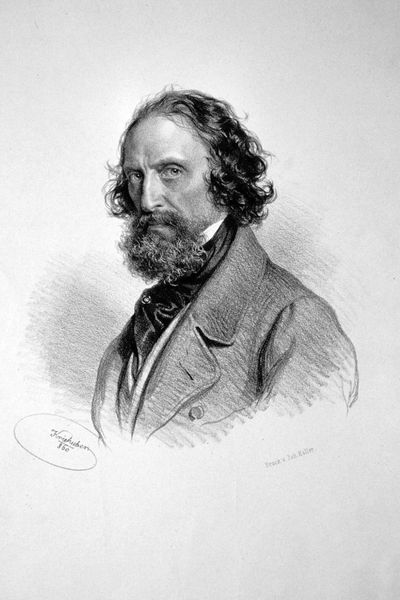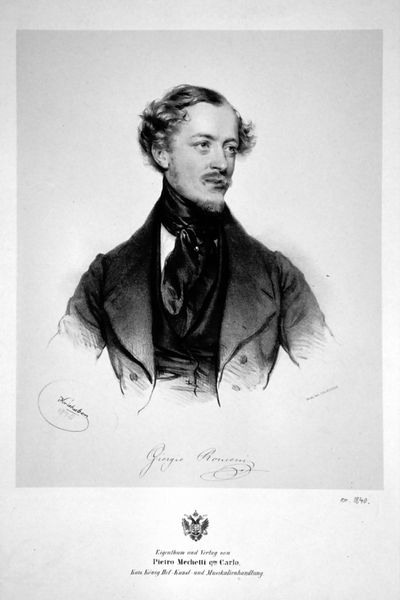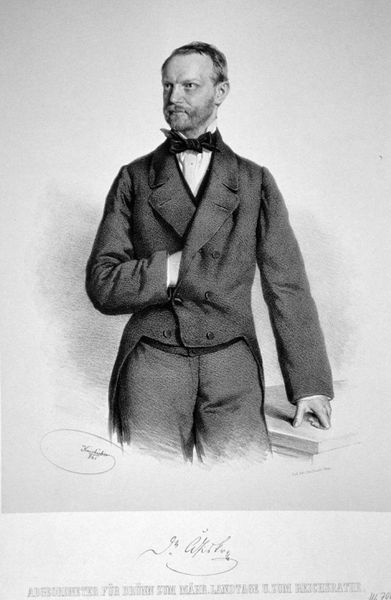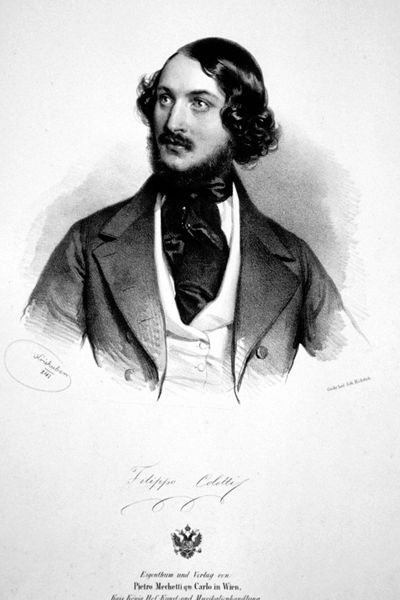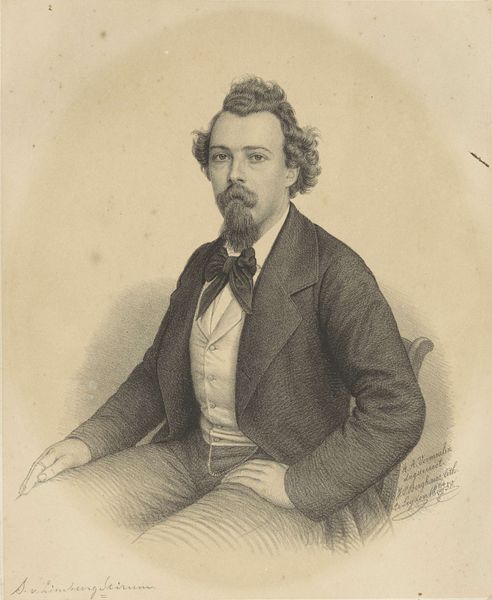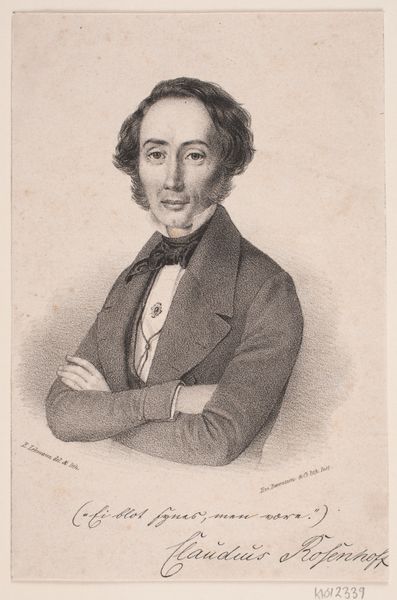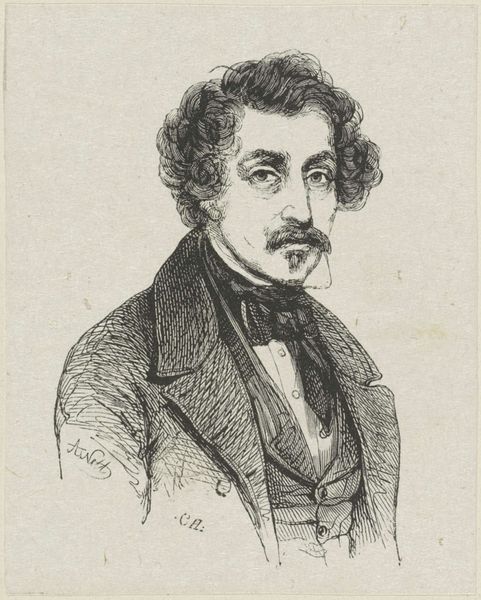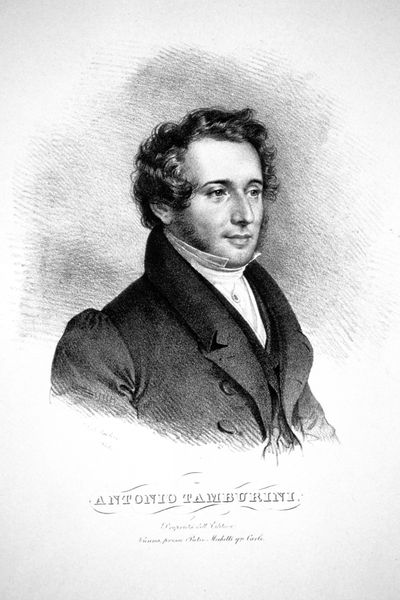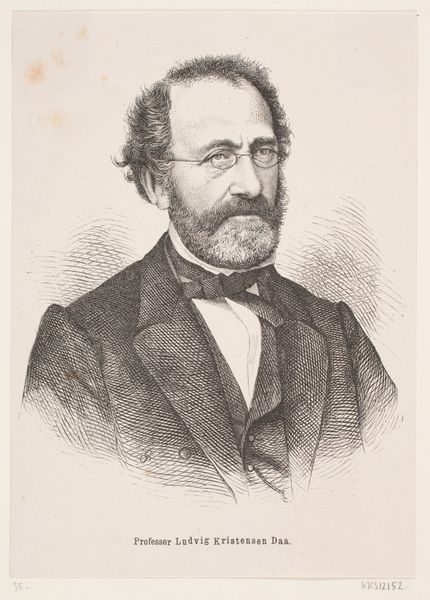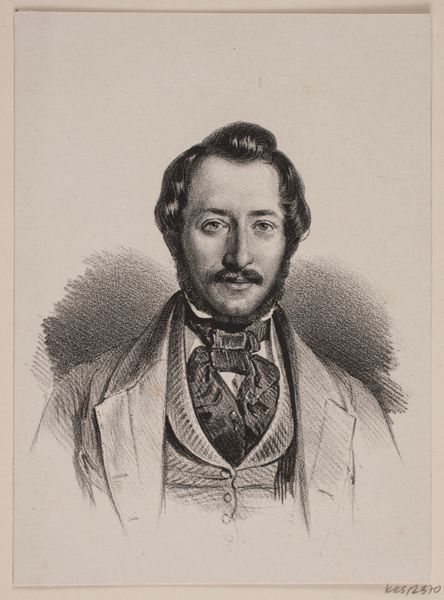
Copyright: Public domain
Editor: This is a drawing from 1861 by Josef Kriehuber, titled "Josef Unger, Austrian jurist and statesman." The meticulous detail achieved with graphite and charcoal is remarkable. I’m struck by how official and posed he appears. What story does this portrait tell? Curator: Well, consider the role of portraits in 19th-century society. They weren't merely likenesses; they were carefully constructed statements of power and social standing. Kriehuber was a master of lithography, a readily reproduced medium. So, think about the implications of a portrait of a prominent jurist like Unger being easily disseminated. Editor: So, it’s about making his image and authority widely accessible? A form of early public relations, almost? Curator: Precisely. Unger's progressive views on law were influential, so controlling his public image through a medium like this was significant. Who commissioned this work? Whose interests did it serve beyond Unger himself? Editor: That’s interesting, I see it’s signed ‘d. Jos. Unger’…was it his students maybe? It does say ‘to the venerable Professor of Law, from his grateful students.’ It seems that these portraits served a much broader purpose than just commemorating an individual, acting more as social and political currency. Curator: Exactly. Portraits operate within a complex web of power dynamics, artistic skill, and social messaging. Even in something as seemingly straightforward as a portrait drawing, there's always more to unpack when considering its historical and social context. Editor: I had never considered how actively portraits participated in broader conversations; now I’m wondering about the images that were left behind of the people without such visible authority, of everyday individuals.
Comments
No comments
Be the first to comment and join the conversation on the ultimate creative platform.

